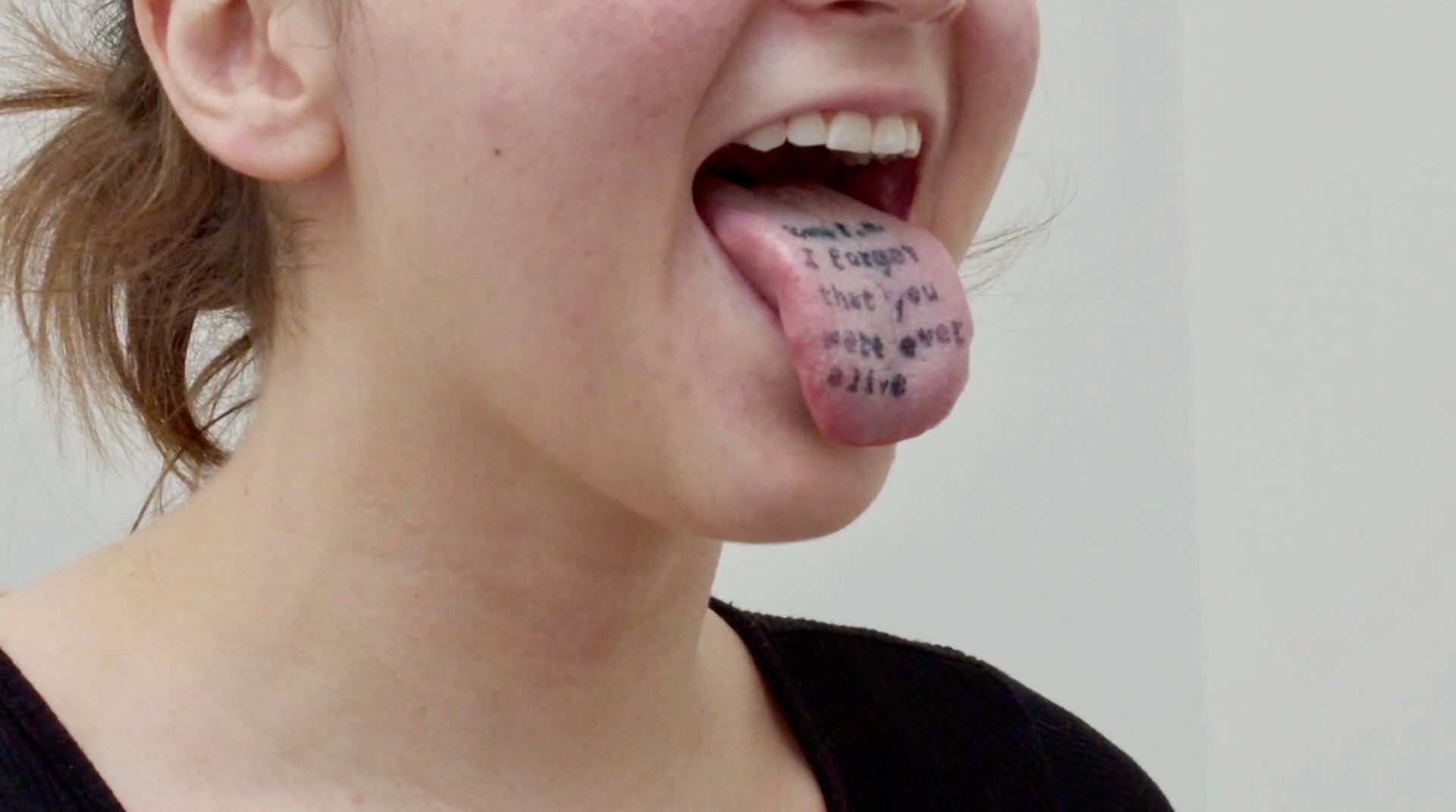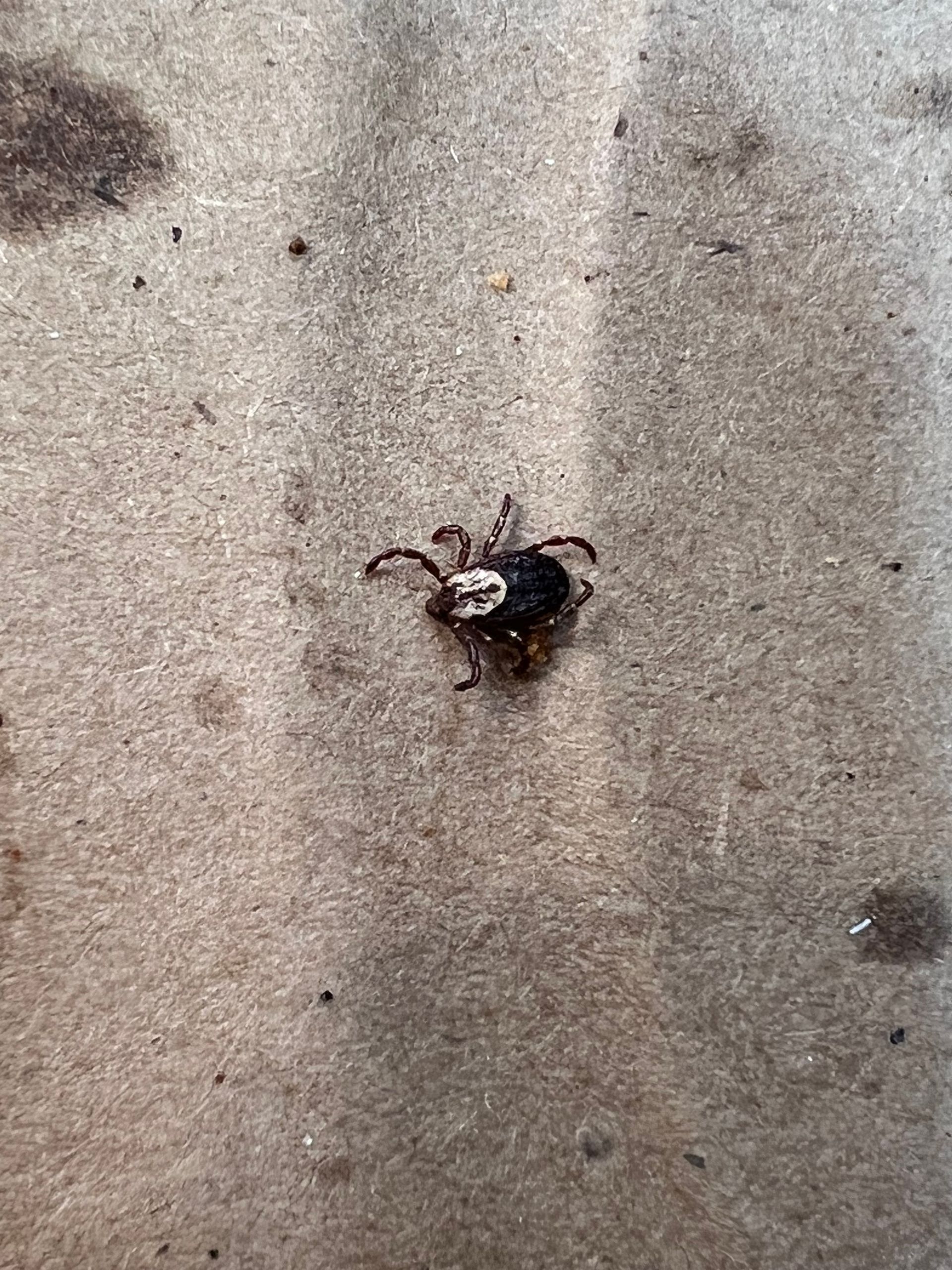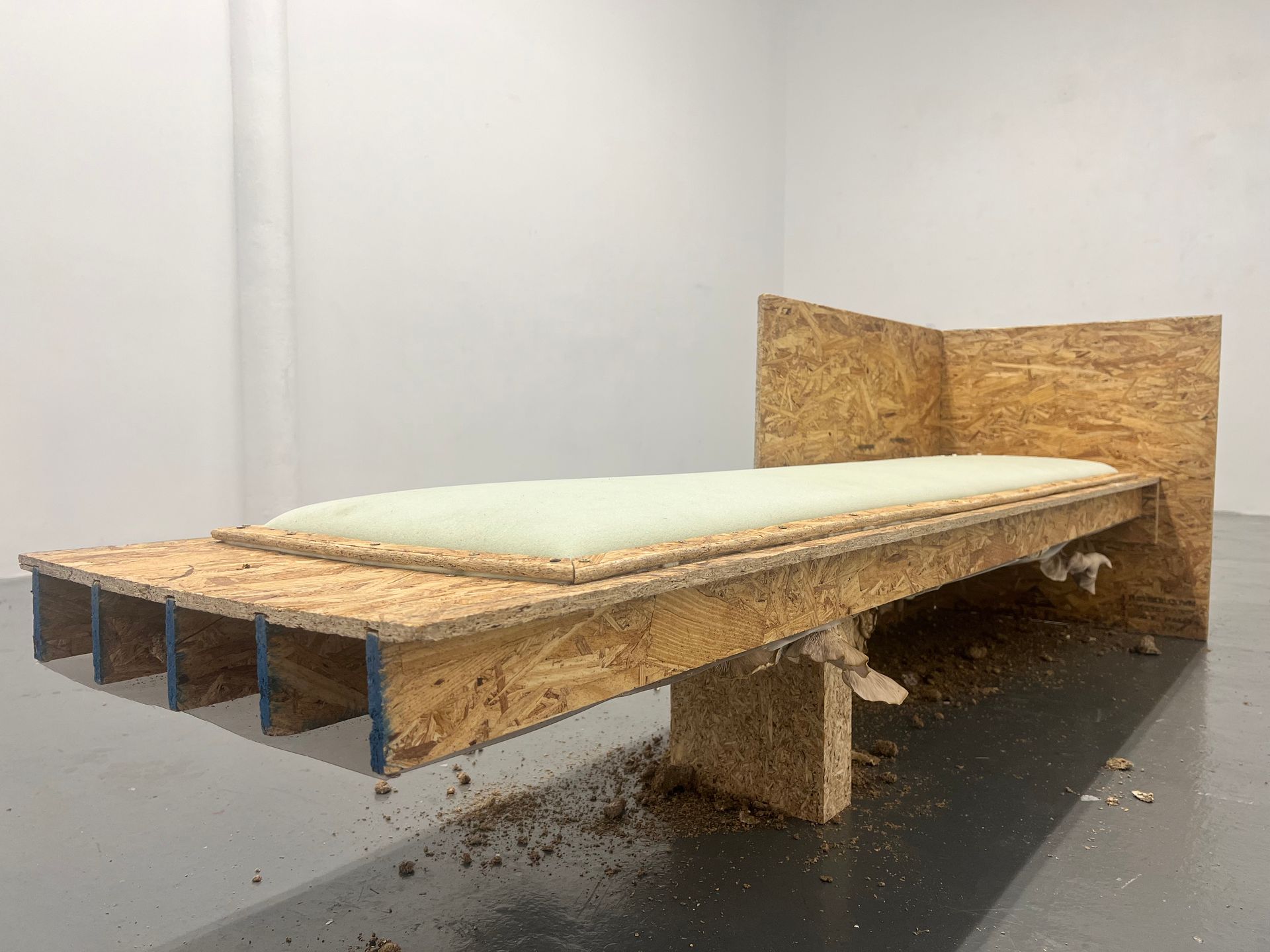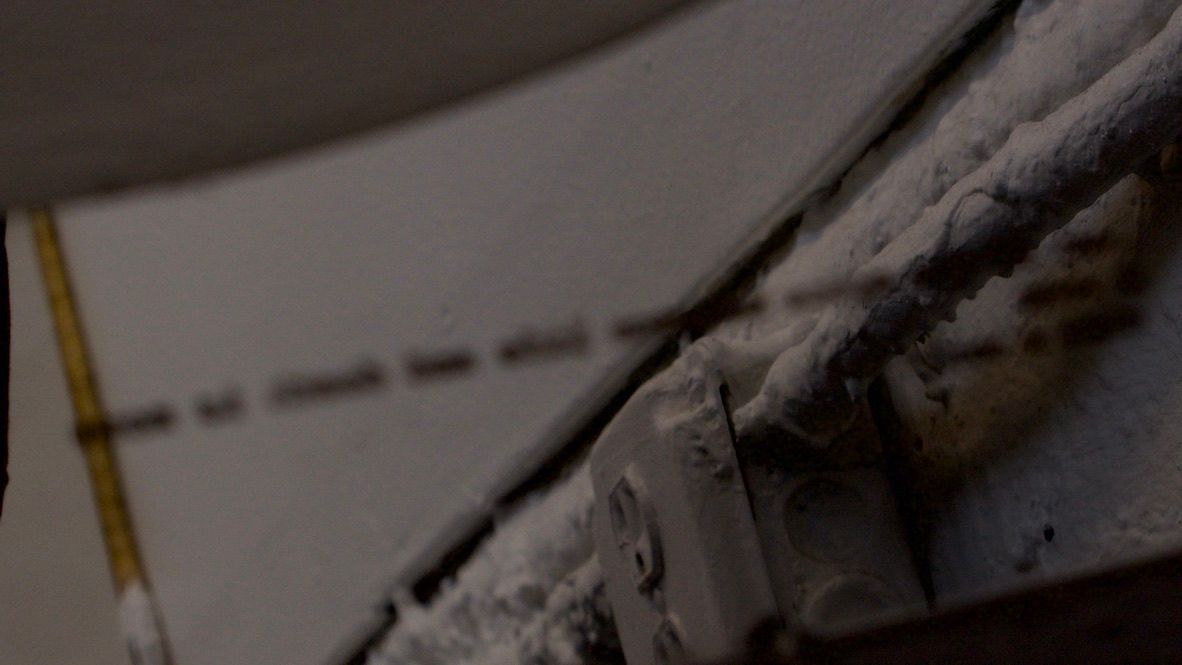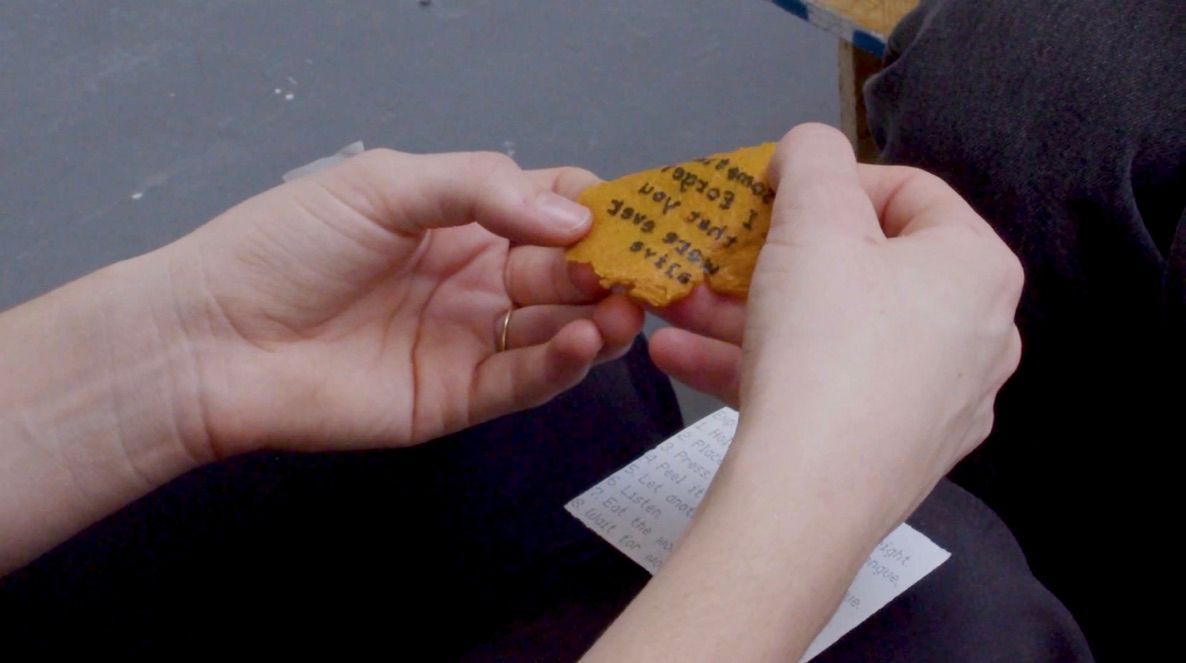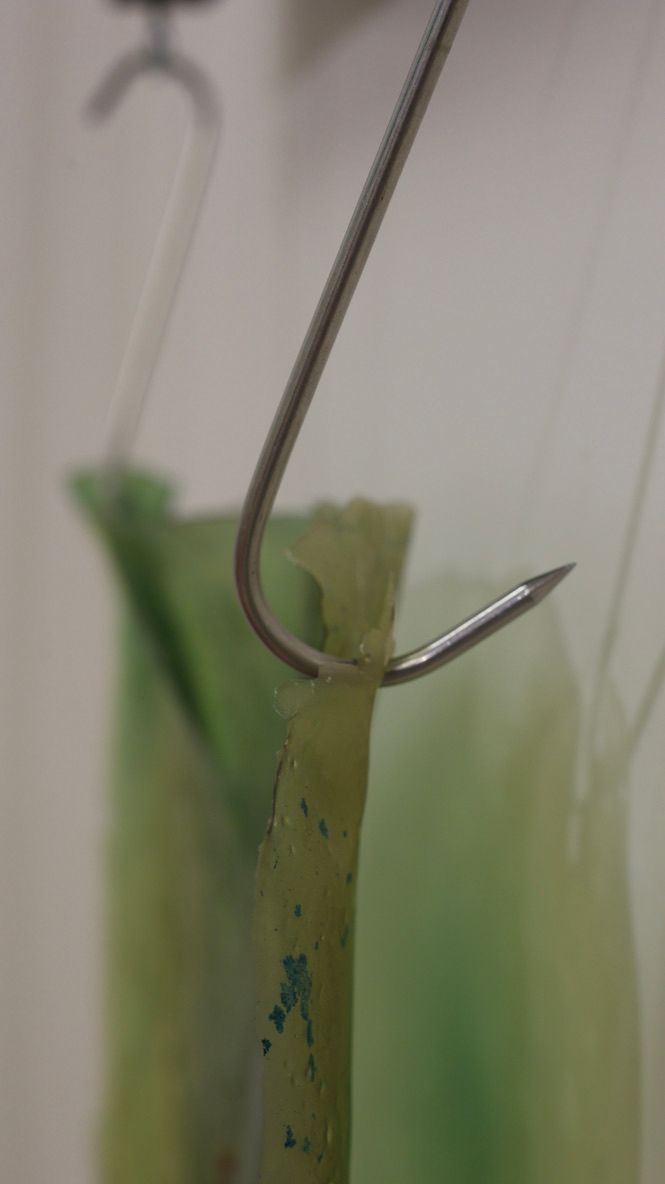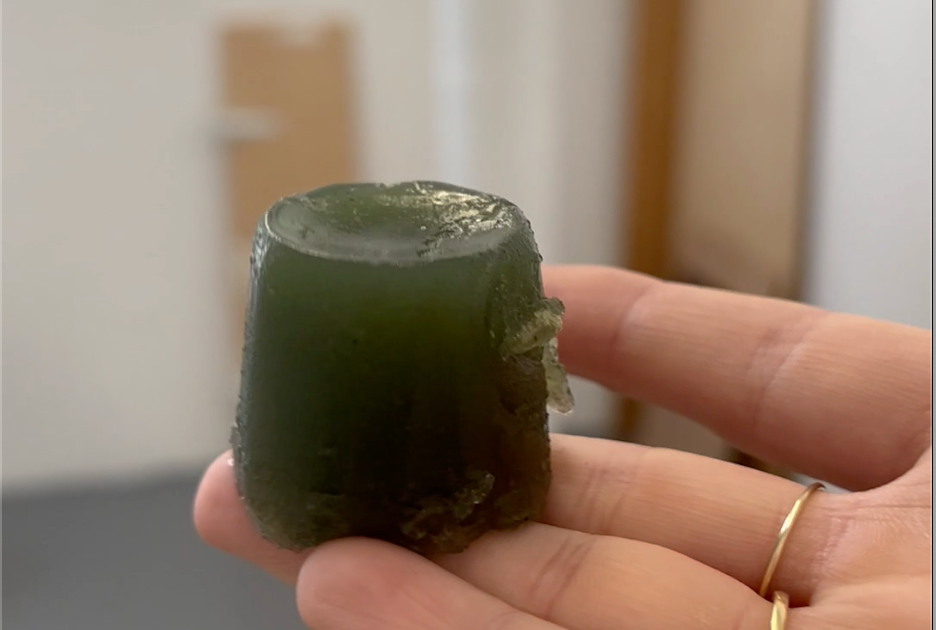Skins: Letters to Nowhere
Mckenna Goade • November 2, 2024
after Eros and The Cancer Journals.
Nov 2, 2024
Letters to Nowhere
What is there possibly left for us to be afraid of after we have dealt face to face with death and not embraced it? Once I accept the existence of dying, as a life process, who can ever have power over me again?
—Audre Lord, The Cancer Journals
I don’t like leather shoes.
I always get canvas.
——but I walk in a city that has no respect for clean shoes.
I try to wash them, but now they’re dirty.
I need pants with no holes in them.
But they end up with tears in the knees,
——or in my thighs, ass cheeks, and seams.
Pants are meant to be worn; I can patch them.
I don’t like my forehead wrinkles.
Some think I should get Botox,
——but I like to raise my eyebrows.
I’ll just cover my face in lotion.
Why embalm a body?
Why seal a coffin?
Why preserve the unpreservable?
Skin, the surface where we meet the world, is a boundary—but one that breathes. Our skin touches air, and in that contact, we are alive. Skin touches, skin folds, skin stretches, skin sags, skin withers—skin is my favorite in-between. It shields our insides from our outsides while maintaining its status as part of the body. Our skin's porous, changing surfaces cannot be preserved, yet there is an emphasis on preserving things that, because they are living, will inevitably experience entropy.
I have started looking for nature’s skin, and in this, I feel the call to the water—or at least what rests on top of it/underneath it. There is an incessant need to clear away the scum(skin) in search of the image. What is contained under thin skins of algae that could be revealed by taking it away? Will I be as “Narcissus, who, because he could not grasp the tormenting, mild image he saw in the fountain, plunged into it and was drowned.” As artists, will we all drown in pursuit of the image? “That same image, we ourselves see in all rivers and oceans. It is the image of the ungraspable phantom of life; and this is the key to it all.”
“Eros is an issue of boundaries. He exists because certain boundaries do. In the interval between reach and grasp, between glance and counterglance, between ‘I love you’ and ‘I love you too,’ the absent presence of desire comes alive. But the boundaries of time and glance and I love you are only aftershocks of the main, inevitable boundary that creates Eros: the boundary of flesh and self between you and me. And it is only, suddenly, at the moment when I would dissolve that boundary, I realize I never can.”
Thinking about our triangle
You, me, and the distance between.
Separation as a film
a skin
a barrier.
Is this why I want to pierce it?
Pressing into plastic with every part of me.
But how much of me is just myself?
Or is it what once was you, and part of you
pushing from both sides?
Thin membranes of material (algae bioplastic) feel like the earth’s skin stretched tightly between death and life. Bioplastic is formed from the breath of the algae (or the breath of the people who breathe into the algae). Algae is where the air touches the earth, where Breath brushes against decay. Bioplastic is a fragile skin—impermanent, porous, always breaking down, always part of a cycle—bioplastic is slippery.
The viscous is a state half-way between solid and liquid. It is like a cross-section in a process of change. It is unstable, but it does not flow. It is soft, yielding and compressible. There is no gliding on its surface. Its stickiness is a trap, it clings like a leech; it attacks the boundary between myself and it.
The viscous attacks boarders—whether they be skin, desire, bioplastic, or algae—they are all slippery, breathing boundaries between the self and other.
In a more direct approach to crossing barriers, I have started writing poems/letters—and allowing slippages within the walls of this text. “Letters make the absent present, and in an exclusive way, as if they were a private code from writer to reader…the act of communication [is] an intimate collusion between writer and reader. They compose a meaning between them by matching two halves of a text. It is a meaning not accessible to others.” If one’s goal is to pierce holes through varied separated ecologies, should one be writing letters? Should they provide their half of the text and wait for the reader to provide the other? Should they “Ask, and listen for the answer?” As I think of edges, in-betweens, barriers, connecting points, and Breath… the natural extension is a look at the edges of words: “Breath is primary insofar as the spoken word is.”
I can write and write.
I can speak and speak.
I can reach and reach.
Will you read it?
Will you hear it?
Will you feel it?
If I were to write you a letter
How would I send it?
Maybe it needs to be nothing anymore for it to meet you.
When something becomes nothing
Does it go to Nowhere?
Can I send letters to Nowhere by making them disappear?
…
I’m scared to be older than my dad.
——there is so much of myself that is him.
Am I all that’s left?
I’m scared I won’t see him in the mirror anymore.
——when my face is wrinkled, and hairs are white.
He was never old enough for long ears or saggy chins.
How much of me is just myself?
Or is this his immortality?
A way to see him grow old in my face.
And my daughter’s face.
And her daughter’s.
…
You would’ve thought it was funny that I’m reading Moby Dick.
Bibliography
Carson, Anne. Eros the Bittersweet: An Essay. Princeton University Press, 2023.
Douglas, Mary. Purity and Danger: An analysis of concepts of pollution and Taboo. London: Routledge & Kegan Paul, 1966.
Kimmerer, Robin. 2013. Braiding Sweetgrass: Indigenous Wisdom, Scientific Knowledge and the Teachings of Plants. Minneapolis: Milkweed Editions. Accessed September 28, 2024. ProQuest Ebook Central.
Lorde, Audre. The Cancer Journals. San Francisco: Special Edition. aunt lute books.
Melville, Herman. Moby-Dick Or, The Whale. New York: Penguin Books, 2003. Melville, Herman. Moby-Dick Or, The Whale. New York: Penguin Books, 2003.
Mckenna Goade
Critical Thinking
Thomas Donovan
Nov 2, 2024
Letters to Nowhere
What is there possibly left for us to be afraid of after we have dealt face to face with death and not embraced it? Once I accept the existence of dying, as a life process, who can ever have power over me again?
—Audre Lord, The Cancer Journals
I don’t like leather shoes.
I always get canvas.
——but I walk in a city that has no respect for clean shoes.
I try to wash them, but now they’re dirty.
I need pants with no holes in them.
But they end up with tears in the knees,
——or in my thighs, ass cheeks, and seams.
Pants are meant to be worn; I can patch them.
I don’t like my forehead wrinkles.
Some think I should get Botox,
——but I like to raise my eyebrows.
I’ll just cover my face in lotion.
Why embalm a body?
Why seal a coffin?
Why preserve the unpreservable?
Skin, the surface where we meet the world, is a boundary—but one that breathes. Our skin touches air, and in that contact, we are alive. Skin touches, skin folds, skin stretches, skin sags, skin withers—skin is my favorite in-between. It shields our insides from our outsides while maintaining its status as part of the body. Our skin's porous, changing surfaces cannot be preserved, yet there is an emphasis on preserving things that, because they are living, will inevitably experience entropy.
I have started looking for nature’s skin, and in this, I feel the call to the water—or at least what rests on top of it/underneath it. There is an incessant need to clear away the scum(skin) in search of the image. What is contained under thin skins of algae that could be revealed by taking it away? Will I be as “Narcissus, who, because he could not grasp the tormenting, mild image he saw in the fountain, plunged into it and was drowned.” As artists, will we all drown in pursuit of the image? “That same image, we ourselves see in all rivers and oceans. It is the image of the ungraspable phantom of life; and this is the key to it all.”
“Eros is an issue of boundaries. He exists because certain boundaries do. In the interval between reach and grasp, between glance and counterglance, between ‘I love you’ and ‘I love you too,’ the absent presence of desire comes alive. But the boundaries of time and glance and I love you are only aftershocks of the main, inevitable boundary that creates Eros: the boundary of flesh and self between you and me. And it is only, suddenly, at the moment when I would dissolve that boundary, I realize I never can.”
Thinking about our triangle
You, me, and the distance between.
Separation as a film
a skin
a barrier.
Is this why I want to pierce it?
Pressing into plastic with every part of me.
But how much of me is just myself?
Or is it what once was you, and part of you
pushing from both sides?
Thin membranes of material (algae bioplastic) feel like the earth’s skin stretched tightly between death and life. Bioplastic is formed from the breath of the algae (or the breath of the people who breathe into the algae). Algae is where the air touches the earth, where Breath brushes against decay. Bioplastic is a fragile skin—impermanent, porous, always breaking down, always part of a cycle—bioplastic is slippery.
The viscous is a state half-way between solid and liquid. It is like a cross-section in a process of change. It is unstable, but it does not flow. It is soft, yielding and compressible. There is no gliding on its surface. Its stickiness is a trap, it clings like a leech; it attacks the boundary between myself and it.
The viscous attacks boarders—whether they be skin, desire, bioplastic, or algae—they are all slippery, breathing boundaries between the self and other.
In a more direct approach to crossing barriers, I have started writing poems/letters—and allowing slippages within the walls of this text. “Letters make the absent present, and in an exclusive way, as if they were a private code from writer to reader…the act of communication [is] an intimate collusion between writer and reader. They compose a meaning between them by matching two halves of a text. It is a meaning not accessible to others.” If one’s goal is to pierce holes through varied separated ecologies, should one be writing letters? Should they provide their half of the text and wait for the reader to provide the other? Should they “Ask, and listen for the answer?” As I think of edges, in-betweens, barriers, connecting points, and Breath… the natural extension is a look at the edges of words: “Breath is primary insofar as the spoken word is.”
I can write and write.
I can speak and speak.
I can reach and reach.
Will you read it?
Will you hear it?
Will you feel it?
If I were to write you a letter
How would I send it?
Maybe it needs to be nothing anymore for it to meet you.
When something becomes nothing
Does it go to Nowhere?
Can I send letters to Nowhere by making them disappear?
…
I’m scared to be older than my dad.
——there is so much of myself that is him.
Am I all that’s left?
I’m scared I won’t see him in the mirror anymore.
——when my face is wrinkled, and hairs are white.
He was never old enough for long ears or saggy chins.
How much of me is just myself?
Or is this his immortality?
A way to see him grow old in my face.
And my daughter’s face.
And her daughter’s.
…
You would’ve thought it was funny that I’m reading Moby Dick.
Bibliography
Carson, Anne. Eros the Bittersweet: An Essay. Princeton University Press, 2023.
Douglas, Mary. Purity and Danger: An analysis of concepts of pollution and Taboo. London: Routledge & Kegan Paul, 1966.
Kimmerer, Robin. 2013. Braiding Sweetgrass: Indigenous Wisdom, Scientific Knowledge and the Teachings of Plants. Minneapolis: Milkweed Editions. Accessed September 28, 2024. ProQuest Ebook Central.
Lorde, Audre. The Cancer Journals. San Francisco: Special Edition. aunt lute books.
Melville, Herman. Moby-Dick Or, The Whale. New York: Penguin Books, 2003. Melville, Herman. Moby-Dick Or, The Whale. New York: Penguin Books, 2003.
